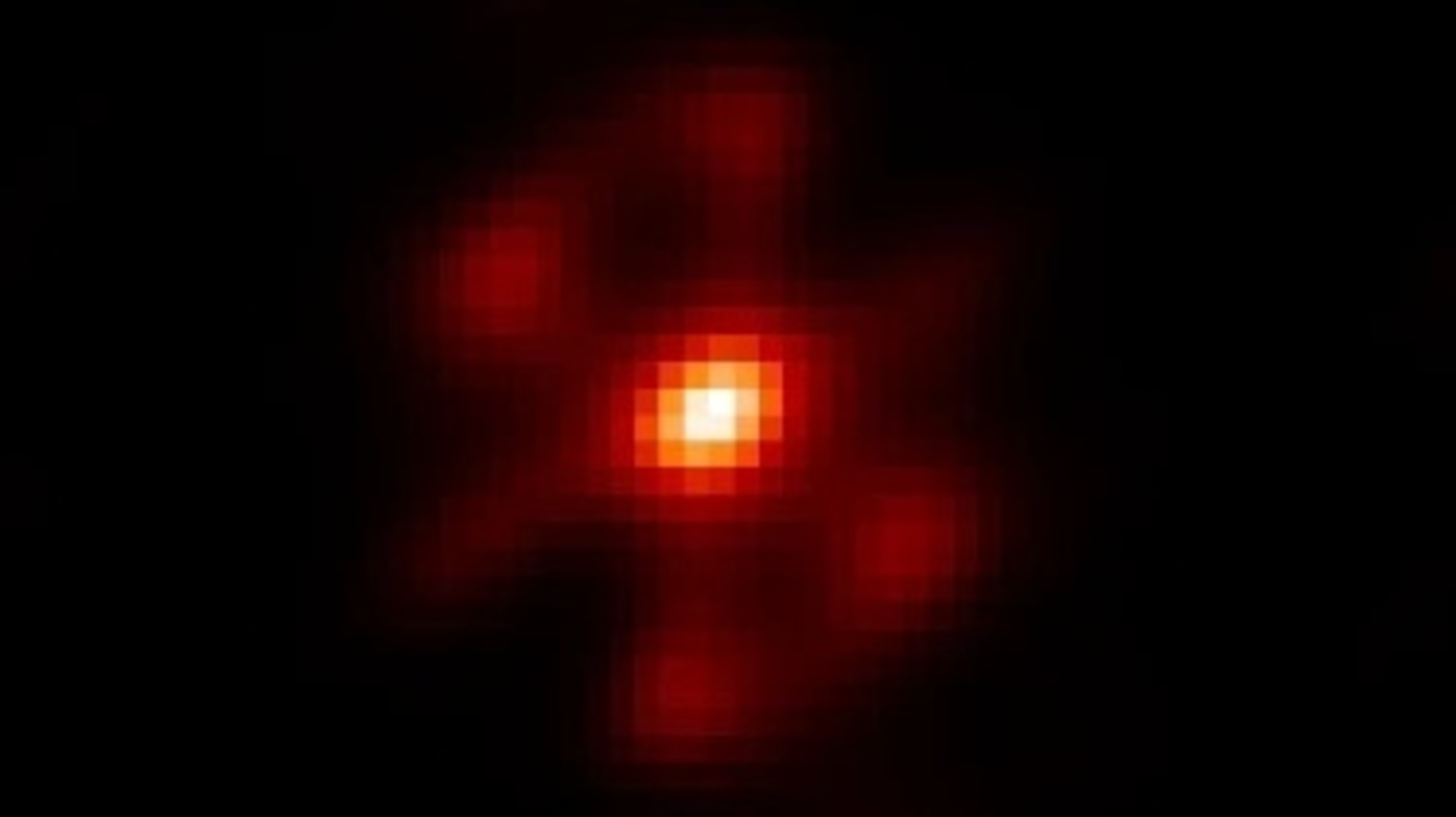New Delta IV Rocket Launches Successfully in Flight Debut
Despite a series of delays, Boeing's newest rocket shot into space today carrying two small satellites and a large mock payload during a test mission for the U.S. Air Force.
The 23-story Delta 4 Heavy rocket, a heavy-lift variant of the Delta 4 family, lifted off from its launch pad at Cape Canaveral Air Force Station in Florida at 4:50 p.m. (2150 GMT). The flight had been delayed three times this month due to weather and technical glitches.
"This is a great Christmas present," said Jim Harvey, a Delta 4 program manager with Boeing, just after the launch. "Nobody is going to be disappointed in seeing this."
About four minutes into the flight, the Delta 4 Heavy's two strap-on boosters fell away from the rocket's central core and about two minutes later the first stage shut down for good and separated from the launch vehicle. The rocket's second stage performed two of three planned burns flawlessly, then entered a five-hour coast phase to deliver its test payload DemoSat into orbit.
DemoSat, an instrumented payload whose sole job is to test vibrations and other Delta 4 Heavy flight phenomena during launch, is expected enter geosynchronous orbit at about 10:30 p.m. EST (0330 Dec. 22 GMT).
Two nanosatellites - dubbed Nanosat 2 - were expected to separate from DemoSat, to which they had clung like barnacles during ascent, about 16 minutes into the flight, though confirmation of that separation was not immediately available. Built by university researchers and students, the nanosatellites are designed to take digital imagery of cloud formations and test the effectiveness of commercial materials in spacecraft.
"[This launch] is very important to us," Dan Collins, vice president of expendable launch systems for Boeing, told SPACE.com in a prelaunch interview, adding that thorough testing of the rocket over the last year has prepared the launch team for today's liftoff. "The launch team really got to know the rocket and the way we go about this."
Breaking space news, the latest updates on rocket launches, skywatching events and more!
A few glitches dogged today's launch but engineers were able address them within the flight's launch window, which stretched from 2:36 p.m. to 5:32 p.m. EST (1936-2232 GMT).
Boeing developed the Delta 4 Heavy rocket as part of the Evolved Expendable Launch Vehicle (EELV) program run by the U.S. Air Force, which paid at least $140 million for the demonstration space shot, according to the FAA.
A more powerful rocket
The powerhouse behind Boeing's Delta 4 Heavy is its combination of three common booster cores, two of which were jettisoned during ascent. The added engines allow the rocket to launch 50,800 pounds (23.040 kilograms) of payload into low Earth orbit and 28,950 pounds (13,130 kilograms) to geosynchronous orbits, which is twice as much cargo that the standard single-core versions.
"It's a major milestone as we bring online these evolved expendable launch vehicles," said Col. Marc Owen, commander of the 45th Space Wing at the Air Force Station, of the heavy-lift rocket during a prelaunch telephone interview. "And it promises to make spaceflight less costly for the U.S. Air Force and the country at large."
Today's successful launch paves the way for two future missions for the U.S. Air Force, which has tapped the Delta 4 Heavy to launch a Defense Launch Support satellite for missile-detection and classified payload for the National Reconnaissance Office.
"This particular flight will demonstrate the readiness of Delta 4 Heavy to deploy large payloads into orbit," Owen said. "That large payload makes a pressing case in space for the Air Force."
NASA and beyond
Collins said that while the Air Force is Boeing's current customer for its heavy-lift booster, it could serve as the launch vehicle for NASA's future science and exploration missions, particularly those requiring the delivery of multiple payloads..
"Exploration does have a number of components, including human, robotic and cargo components," said Karen Poniatowski, NASA's deputy associate administrator for launch services in the Space Operations office at the agency's Washington, D.C. headquarters. "So expendable launch vehicles will clearly play roles."
Lockheed Martin is also developing a heavy-lift rocket, a variant of its the Atlas 5 developed under the EELV program. NASA officials will closely monitor the performance of both rockets as launch vehicle considerations in future missions.
"We look at them comparatively to determine what capabilities are being afforded the nation so we understand what we might need," Poniatowski told SPACE.com. "And it's not just Atlas or Delta, there are many emerging launch companies to consider so it isn't one size fits all."
While today's launch marked the first flight of the Delta 4 Heavy, it is the fourth liftoff for Boeing's Delta 4 family since its debut in 2002. All three previous flights were medium versions of the Delta 4 equipped with a single common booster core.

Tariq is the award-winning Editor-in-Chief of Space.com and joined the team in 2001. He covers human spaceflight, as well as skywatching and entertainment. He became Space.com's Editor-in-Chief in 2019. Before joining Space.com, Tariq was a staff reporter for The Los Angeles Times covering education and city beats in La Habra, Fullerton and Huntington Beach. He's a recipient of the 2022 Harry Kolcum Award for excellence in space reporting and the 2025 Space Pioneer Award from the National Space Society. He is an Eagle Scout and Space Camp alum with journalism degrees from the USC and NYU. You can find Tariq at Space.com and as the co-host to the This Week In Space podcast on the TWiT network. To see his latest project, you can follow Tariq on Twitter @tariqjmalik.
